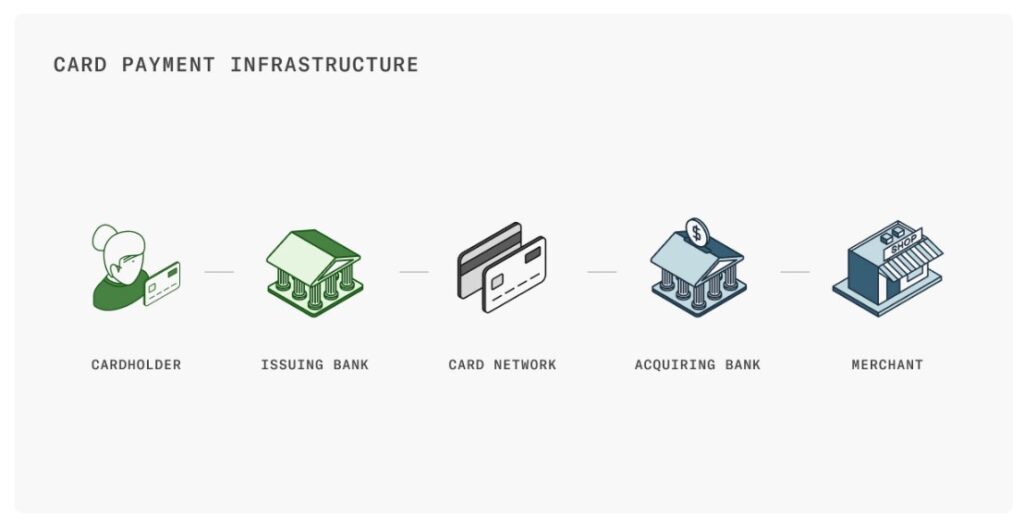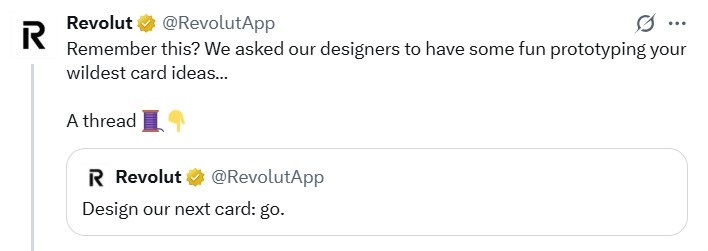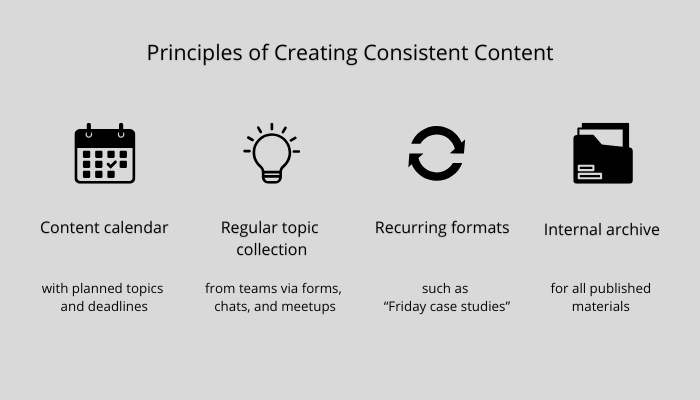Contents
People never choose a new financial service impulsively. Customers study every option, check security features and seek trusted advice before making a decision. In such a crowded market with complex solutions, people expect clear explanations and genuine reasons to trust what you offer. Expert articles provide readers with the clarity they need by demonstrating how your solution works and explaining why it is worthy of their trust.
This is where expert content makes all the difference. It helps answer tough questions and builds credibility. In this guide, we’ll show what expert articles look like in FinTech, why they matter, and how to create content that actually earns trust.
What Makes Content Marketing in FinTech Unique
FinTech stands at the intersection of finance and technology. The industry includes familiar solutions such as mobile banking, payment processing, and online insurance, as well as more niche products like investment platforms, accounting automation tools, crypto wallets, and payment gateways for e-commerce. All these tools share a single goal: using technology to make financial services more accessible.
From a product standpoint, FinTech is complicated. For instance, a banking app is actually a whole ecosystem. It includes payments, transfers, loans, deposits, and cashback. Everything needs to work quickly and reliably, without confusing explanations.
The main challenge for content marketing in FinTech is to make complex topics easy to understand. You need to clearly explain how your product works, why it’s secure, and how it makes life better for your customers. The more straightforward your story, the faster users will trust and choose your solution.
Trust Comes First
Financial services deal with people’s money and sensitive data. That’s why users don’t easily trust just any platform. Surveys show that over half of Americans remain concerned about the safety of online banking and sharing personal financial data online. Even a small mistake in your copy, a bold claim, or a clunky website can scare potential clients away.
The main job of your content is not to sell right away. First, it should ease anxiety and build confidence. Reviews, customer stories, and team interviews all help with this. The key is to sound confident but never pushy.
Different Audiences, Different Content
FinTech products serve multiple audiences. IT specialists want to know how your solution works. Business owners and executives want to know how it will impact their business, whether it’s reliable and how easy it is to use.
That’s why you need to use different channels and tailor your content for each audience.
For example, engineers from top banks often share their experiences on tech platforms. They write not only about products, but also about things like training neural networks or improving IT processes.
For business leaders, case studies and how-to guides published on business blogs work best. These formats help them see real results and practical benefits.
Good Design Is Also Content
In FinTech, visuals matter. Tables, charts, diagrams, and short videos help people quickly grasp even the most complex topics. Nobody wants to read a wall of text about investments or algorithms — most will simply give up halfway through.
But a single interactive diagram can explain a complicated process in seconds. For example, a payment service can show how acquiring works with a simple, clear visual instead of a long explanation.

Expert Content and Its Goals
In FinTech, expert content is the primary tool for engaging your audience, especially in B2B. But it’s not just about writing “smart articles.” These materials solve several key tasks:
| Goal | Types of materials | How it works |
|---|---|---|
| Attracting customers | Reviews, how-to articles, case studies, checklists | Show how to solve real-world problems. The product is introduced as a helpful tool, not the main focus. |
| Building loyalty & community | Employee stories, project breakdowns, trend reviews | Keep clients updated and engaged. Build a sense of belonging around your brand. |
| Education | Step-by-step guides, explainers and legal insights | Make complex changes and laws easy to understand. Offer tips and practical advice. |
Key Principles for Creating Expert Content
A great expert article in FinTech isn’t thrown together on the fly. High-quality material requires careful preparation, especially if your goal is to build trust and showcase your company’s expertise. Here are five core principles behind effective expert content:
Bring in internal and external experts
Tap into the knowledge of your developers, analysts, legal specialists, security experts, and product managers. You can also involve outside partners, such as lawyers, regulators, auditors, and loyal clients.
Show proof, not just opinions
Opinions without data are just opinions. Use research, statistics, and real-life case studies to support your arguments. For example, instead of saying “mobile banking is popular,” share concrete numbers about user adoption.
Double-check every word
Mistakes in terminology, outdated data, or unclear wording can destroy trust. Always fact-check your materials, especially when writing about security or legal matters.
Keep it simple
Even the most complicated topics can be explained clearly. The simpler your language, the more likely people will read and understand your content.
Personalize your message
Different audiences need different levels of detail. Sometimes you’ll need separate articles for beginners and experienced CFOs. For example, a guide for first-time entrepreneurs will be very different from an advanced article for financial executives.
Formats for Expert Articles
Choose the right format based on your goals and audience. Here are some of the most effective types of expert content in FinTech:
| Format | What it does | Why it matters |
|---|---|---|
| Storytelling & case studies | Real stories and examples. Show how a client used your product, what they achieved, and lessons learned. Problem–solution–result. | To capture attention, build trust, and show the product’s value in real situations. |
| Reviews & analytics | Deep dives into trends, new rules, product comparisons, and risk assessments. | To explain complex topics, position your brand as a thought leader, and help managers make decisions. |
| Expert interviews | Conversations with professionals. Share fresh ideas and unexpected insights. Go beyond simple Q&A — discuss trends and future views. | To build trust, highlight your team’s expertise, and share new perspectives. |
| How-to articles & checklists | Step-by-step guides, actionable lists, and practical advice. | To retain and educate customers, create useful lead magnets, and provide real value. |
It’s best to mix different formats. Interviews and case studies build trust. How-to articles and checklists help with retention. Stories and reviews boost engagement and keep your content fresh for every segment of your audience.
Content Distribution Channels
For articles to reach the right people, they must be distributed effectively. Here are the main platforms for sharing expert articles:
It’s great for long articles, case studies and detailed reviews. This is the place for articles that are easy for search engines to find, links to other parts of the site and forms to collect people’s contact information. Blogs work especially well when paired with newsletters and social media.
TechCrunch, Forbes and industry-specific blogs help you reach beyond your core audience. Adapt your material to fit each platform. First-person stories work best on some sites, while others favor technical breakdowns or market analysis.
People don’t have time to read long articles on social media. Repurpose your content into short, easy-to-read posts. This can be a summary with key takeaways, a main idea, plus a link to the full article, quotes from interviews, or mini-guides in a carousel format.

Use email to connect with loyal clients and subscribers. Send out digests, highlight key topics, or create a series of valuable content. A good newsletter guides readers straight to your main articles and helps drive website traffic.
Distributing your content across several channels boosts your reach and ensures that every target group sees your message.
How to Work Effectively with In-House Experts
You need people who truly understand your product to create expert content. But they’re often busy and have their own priorities. To keep content production running smoothly, follow these steps:
1.Take the lead and manage the process.
Don’t expect your experts to write articles themselves. The content team should reach out, explain the goal, and offer different formats — maybe a voice recording, a quick call, or a written Q&A. Make it as easy as possible for the expert.
2. Be clear about why it matters.
Let experts know how sharing their knowledge can benefit the company. Expert content helps show off your strong team, share real solutions, boost your brand reputation, and build trust with customers.
3. Keep experts engaged.
Share results: show them how many people read the article, what feedback it got, or if it was featured in a newsletter. When experts see the impact, they’re more likely to participate again.
4. Build a repeatable system.
One-off articles are nice, but real value comes from regular collaboration. Ongoing teamwork leads to transparent and predictable processes for both editors and experts.

Why FinTech Needs Expert Content: Key Takeaways
FinTech audiences are skeptical. They read, compare, and research before making decisions. Without clear and helpful content, even the best product might never win their trust.
The right content does more than just explain. It:
- Breaks down complex topics into simple language, making your product easy to trust.
- Warms up a “cold” audience and helps guide them from curiosity to purchase.
- Strengthens your brand’s reputation in the market.
- Has a long shelf life. Great content keeps bringing in clients even a year after publication.
In FinTech, quality content marketing is not just a cost center — it’s a profitable long-term investment.



